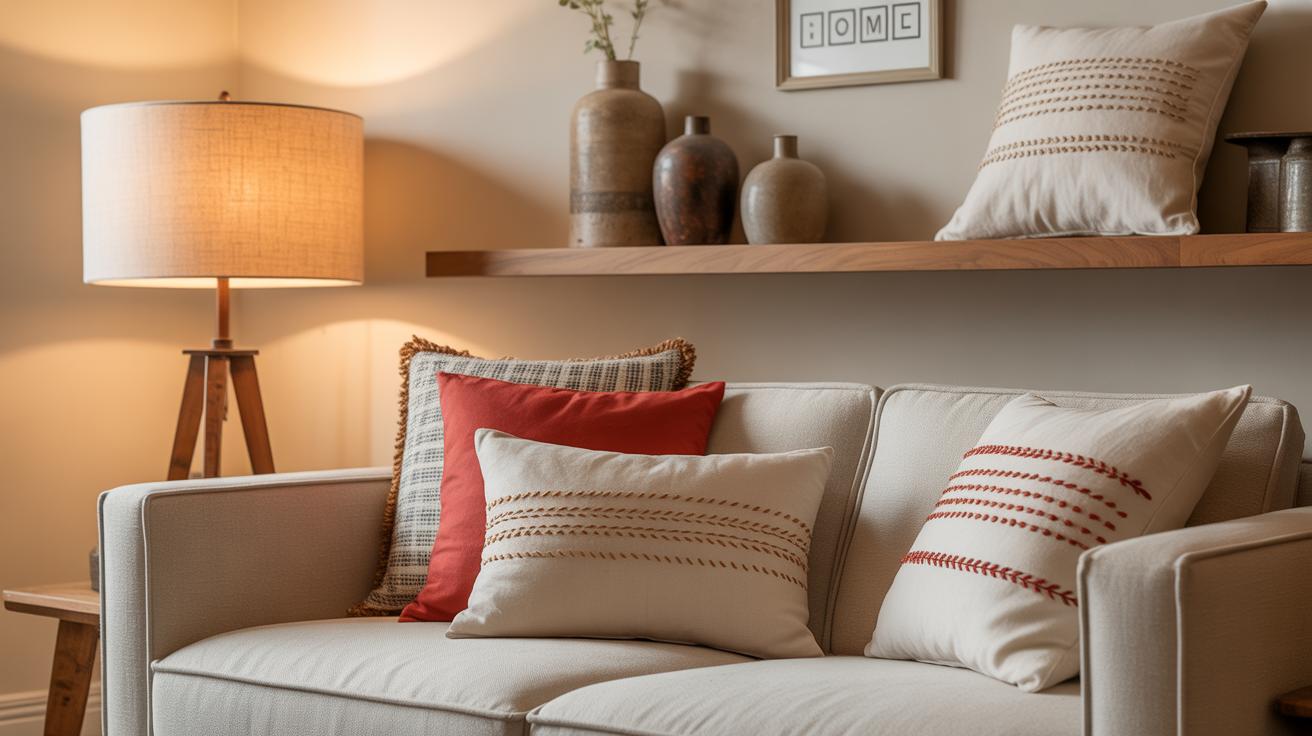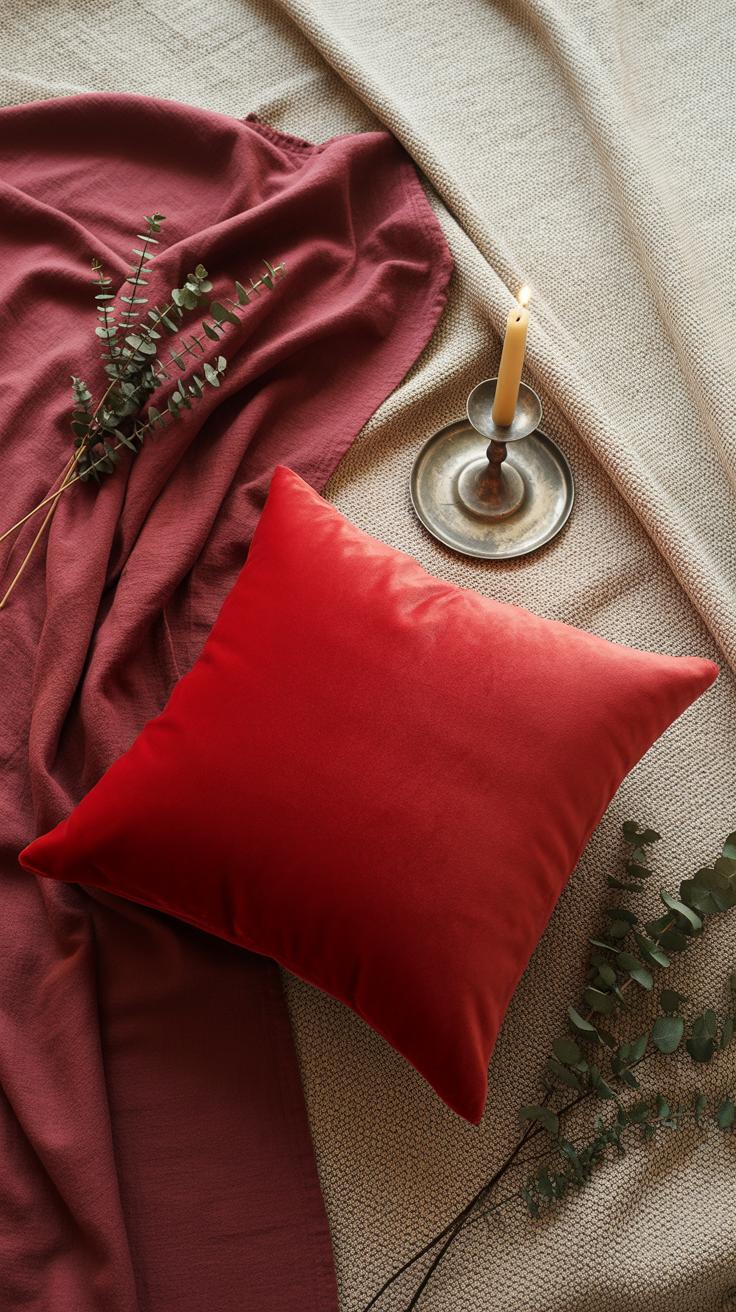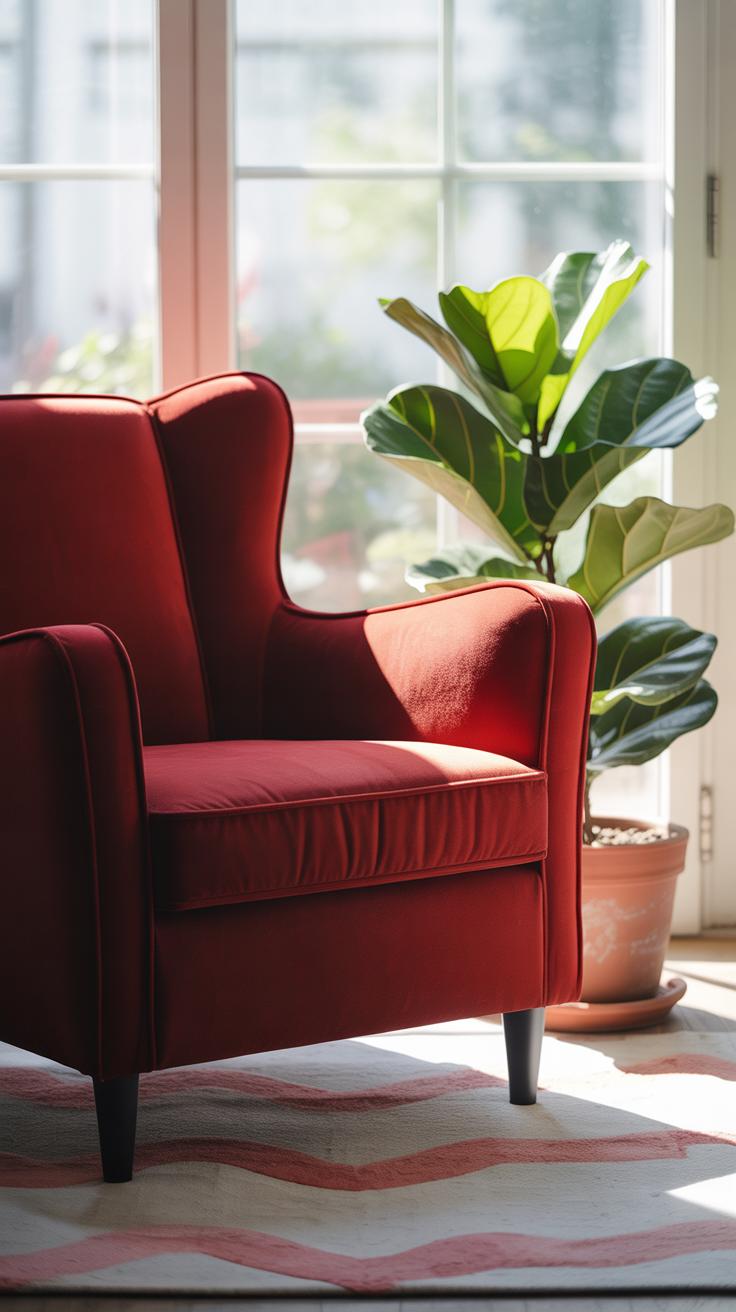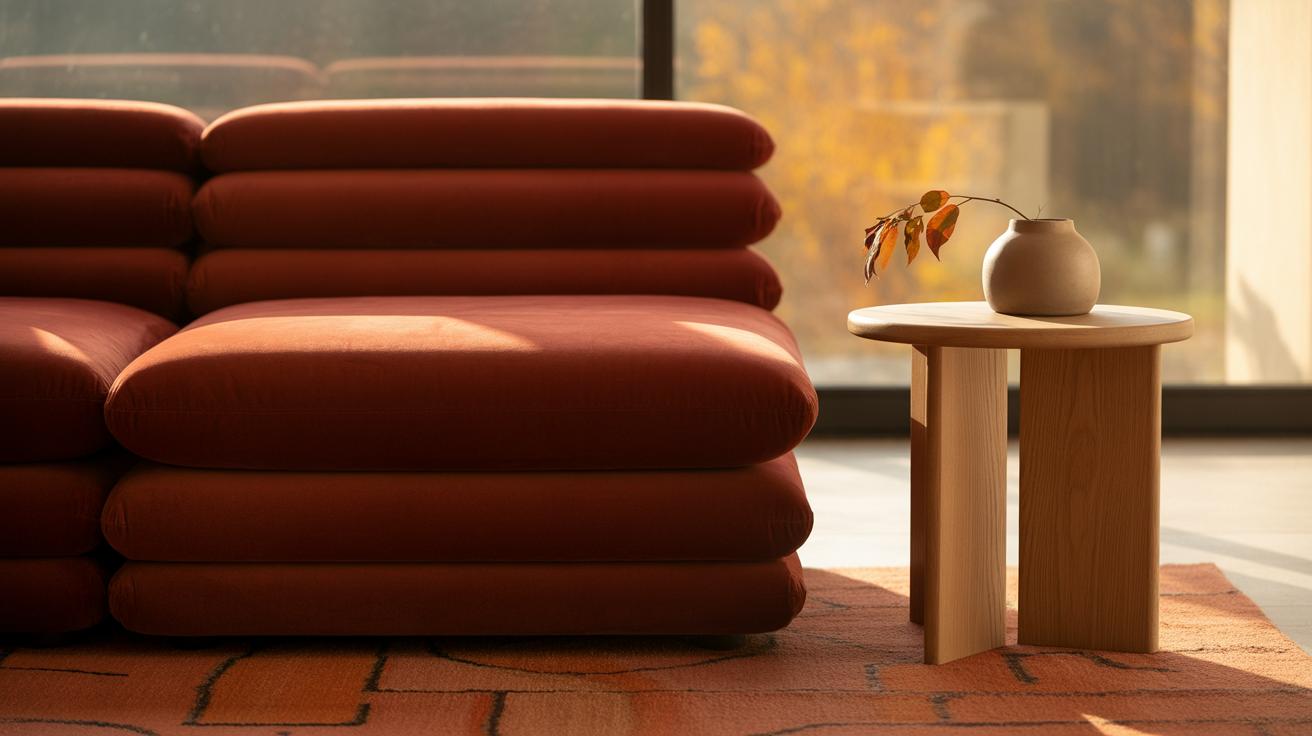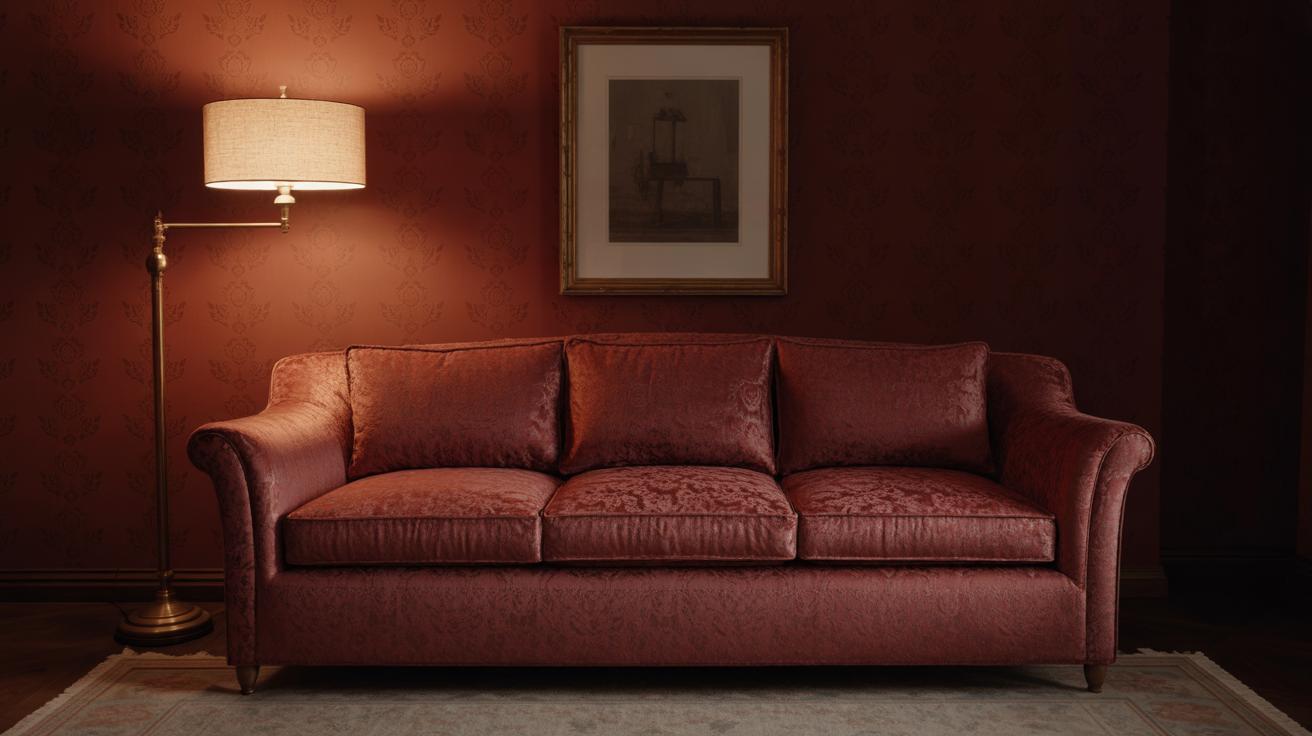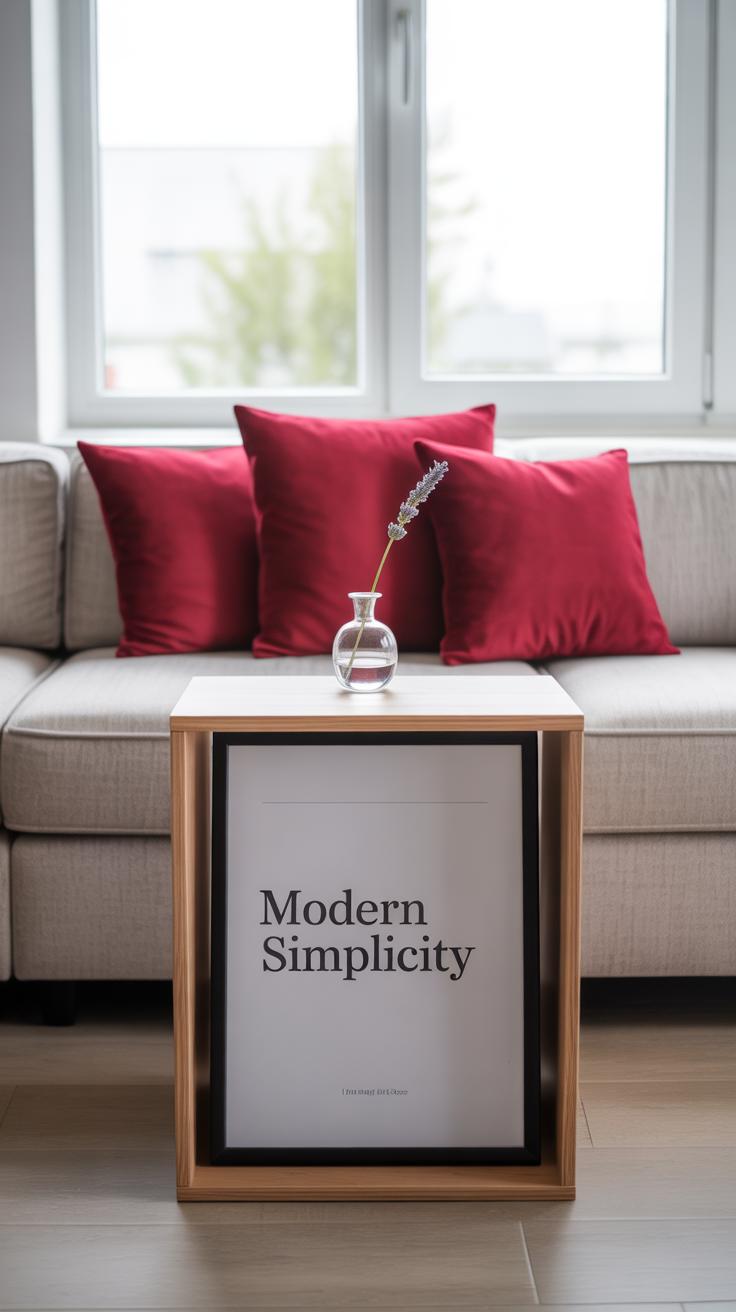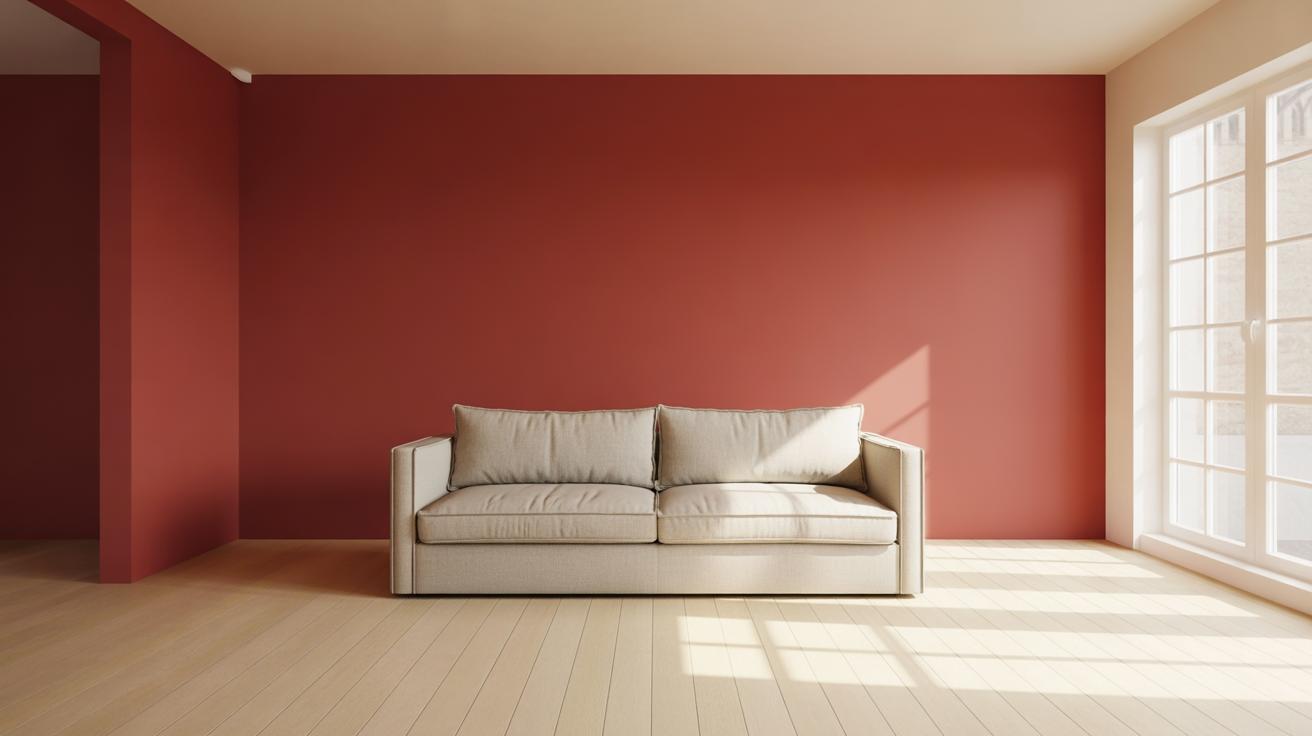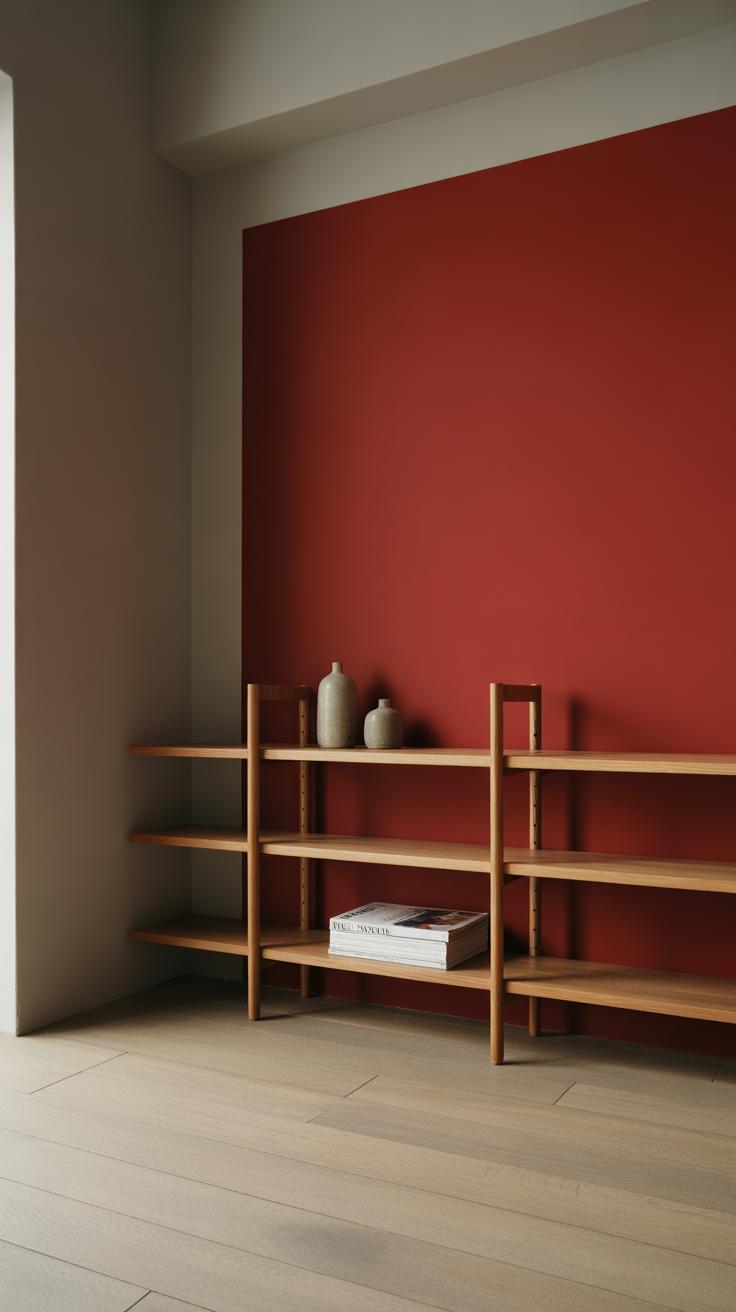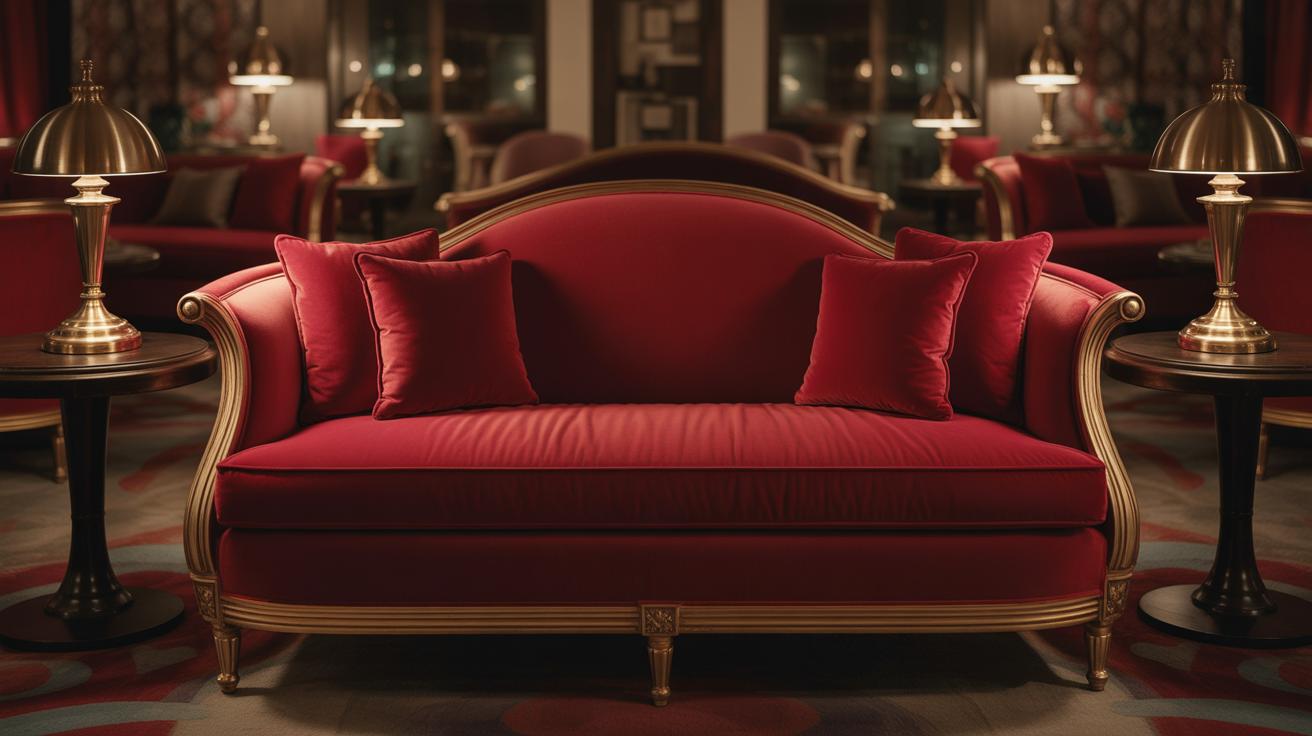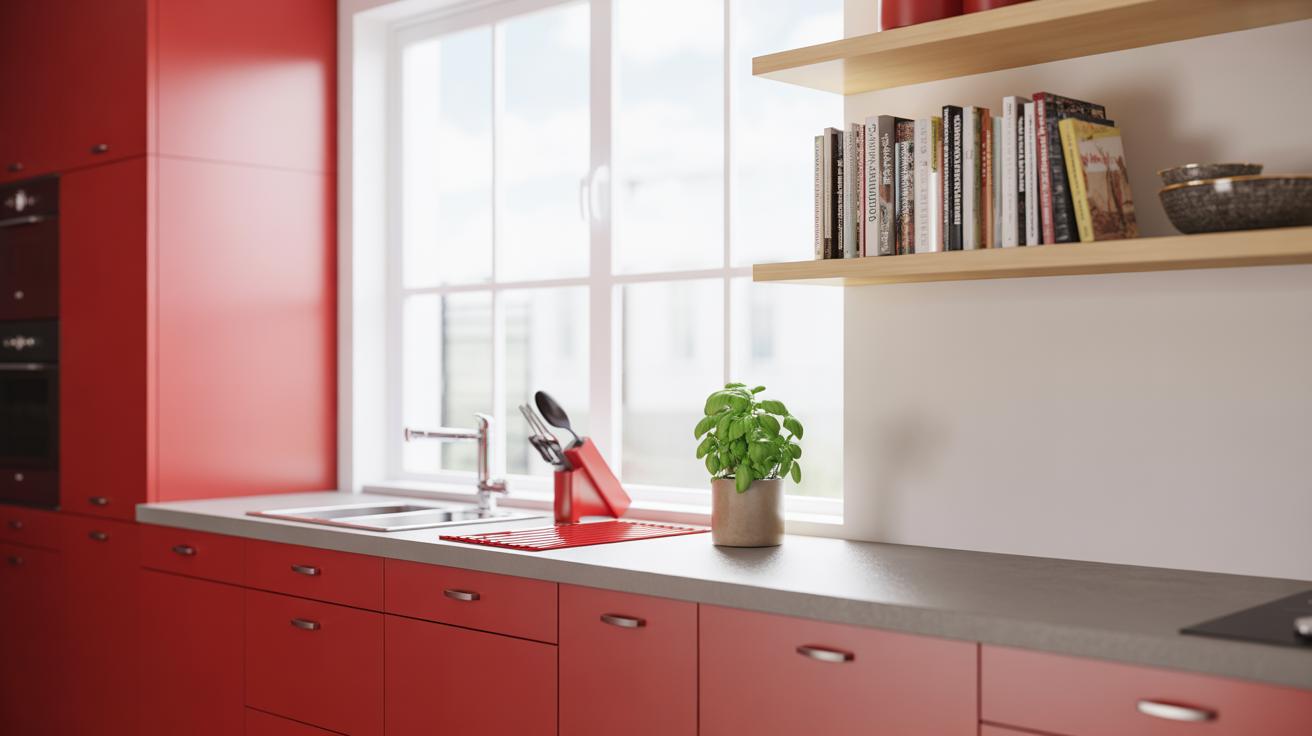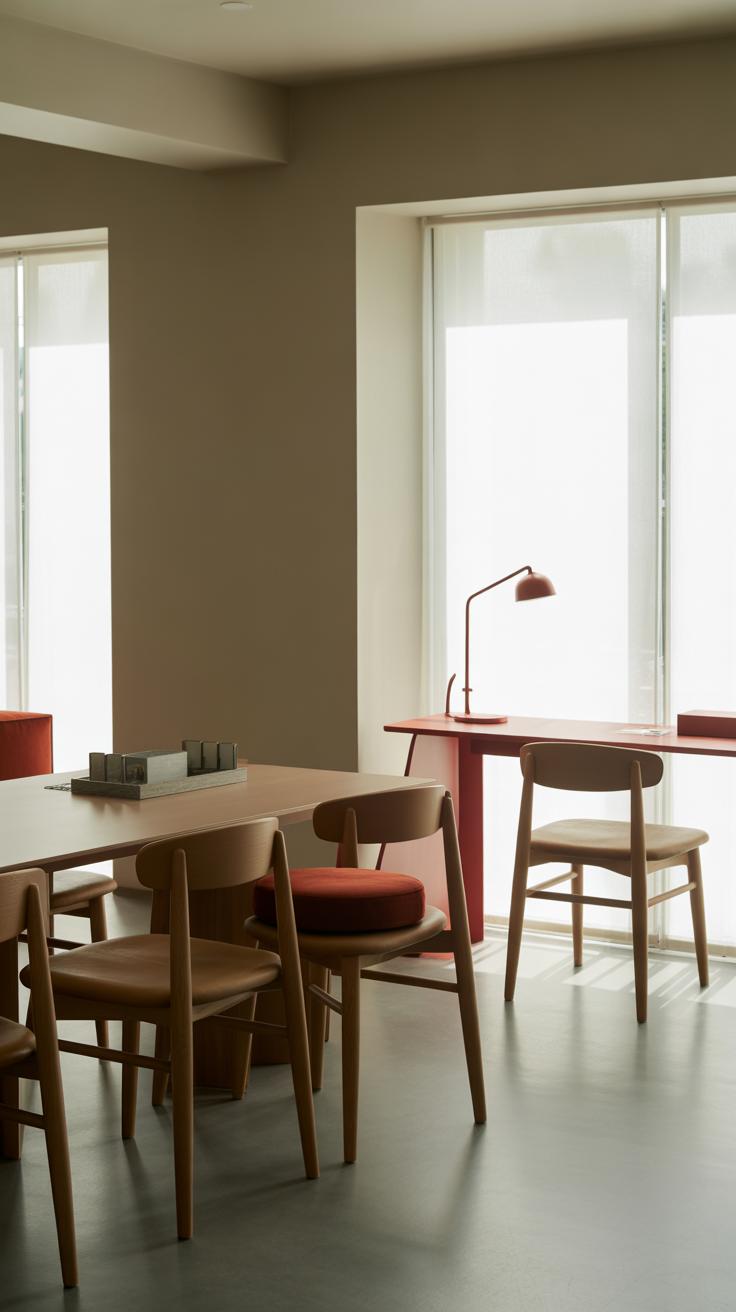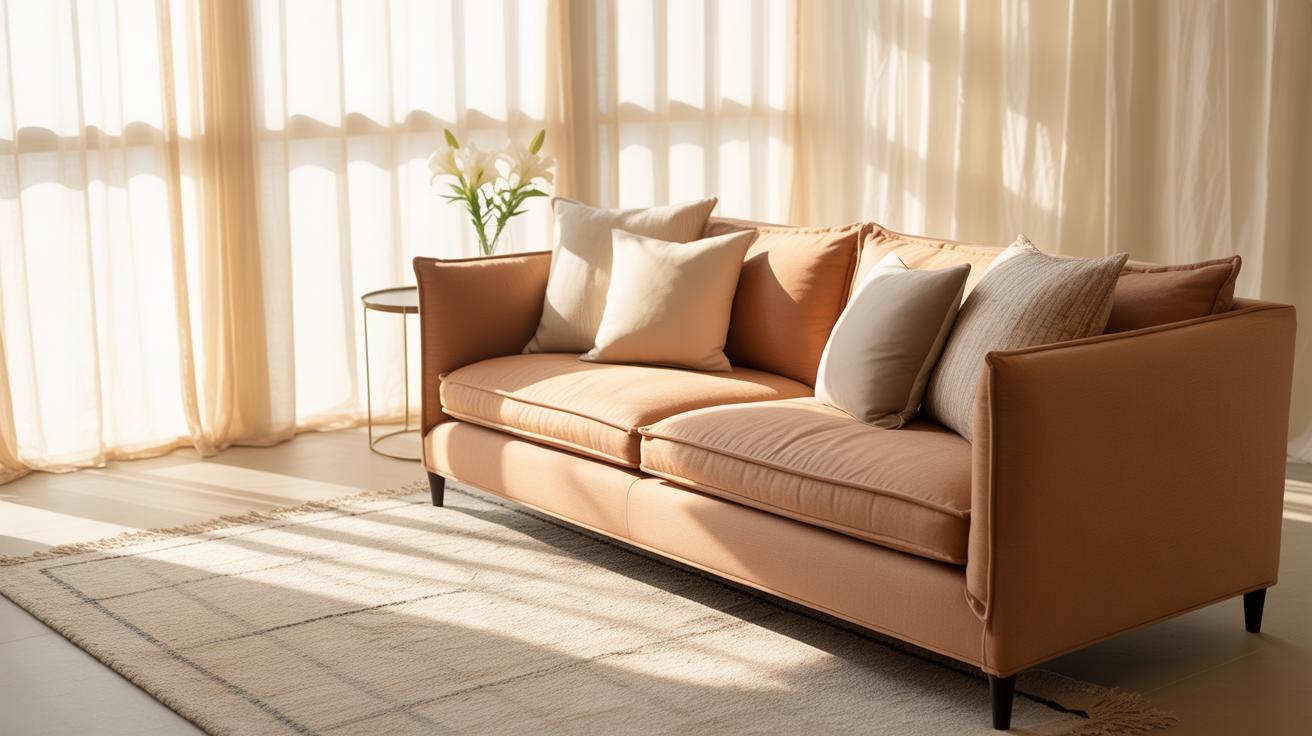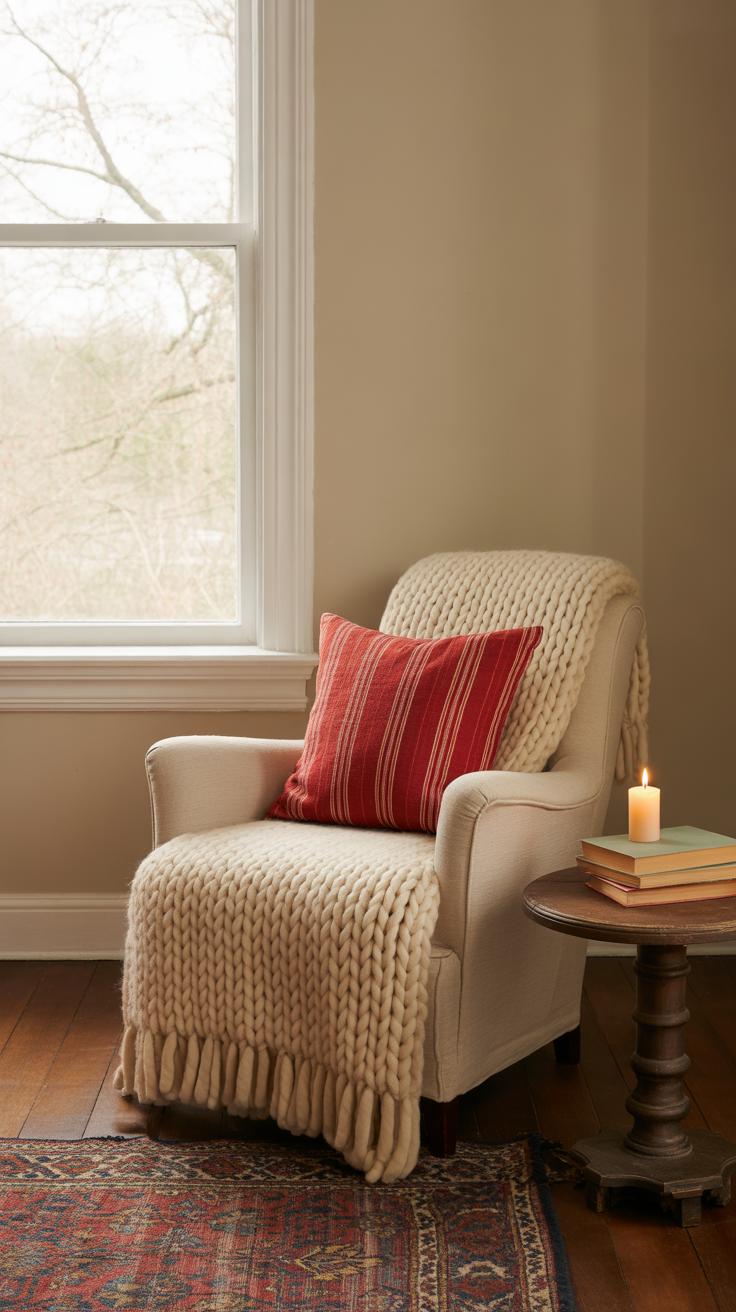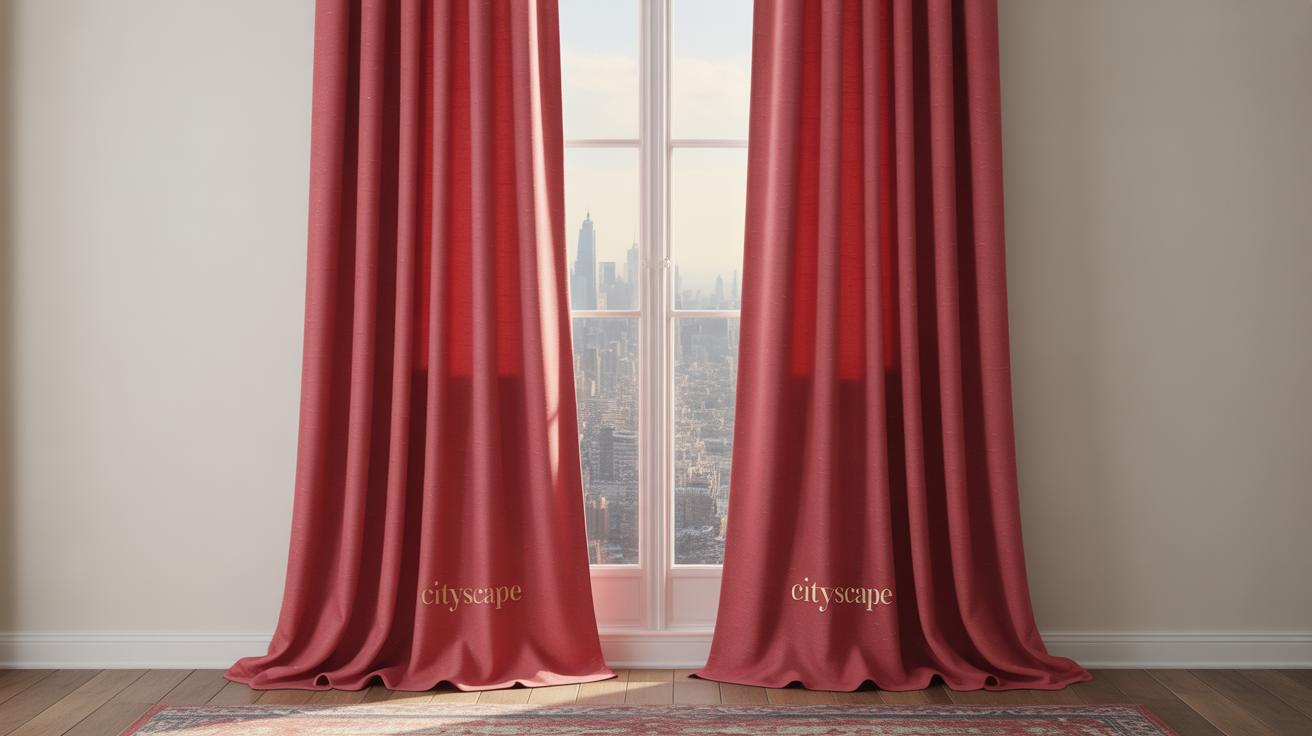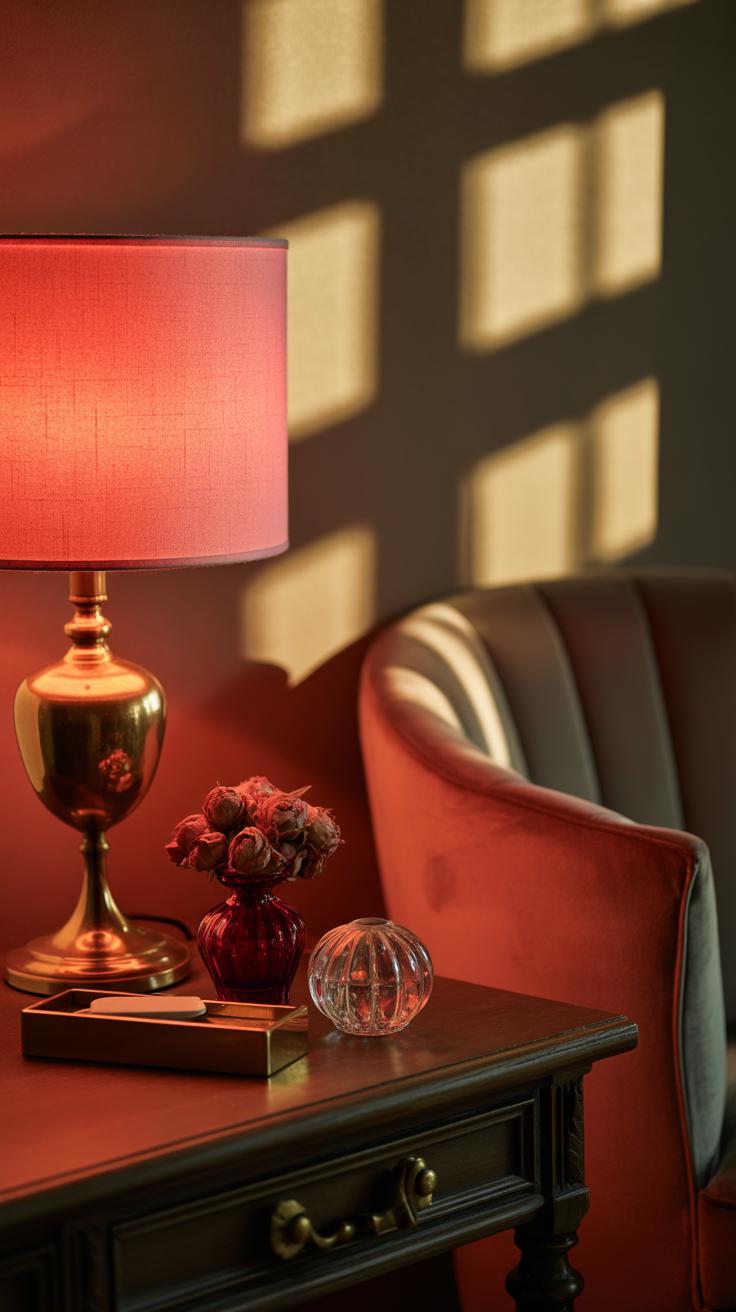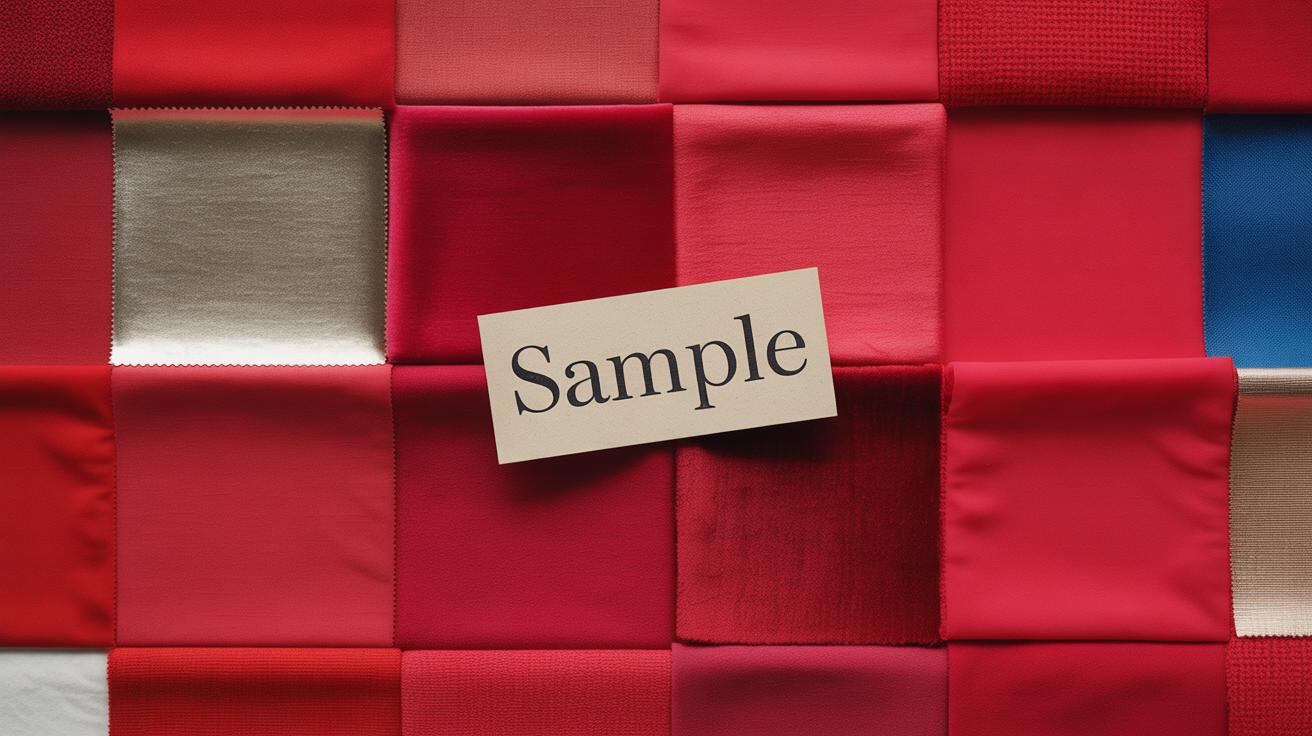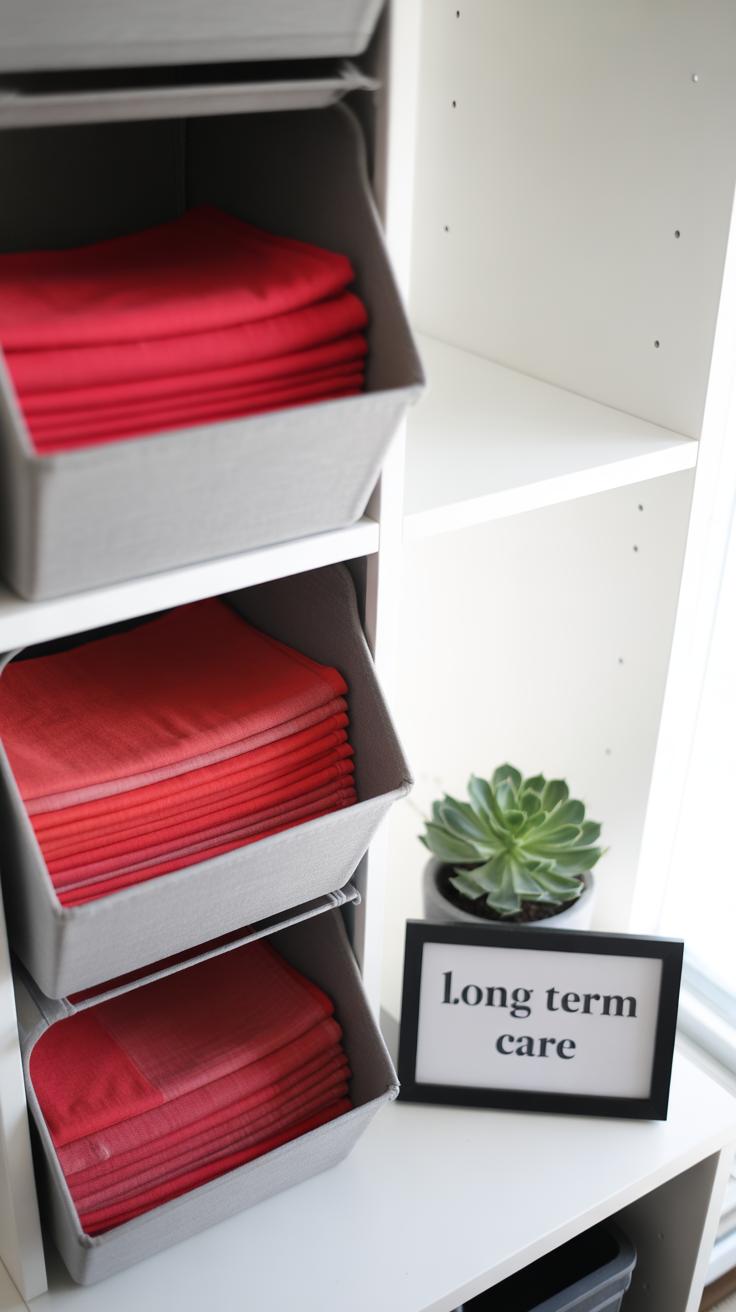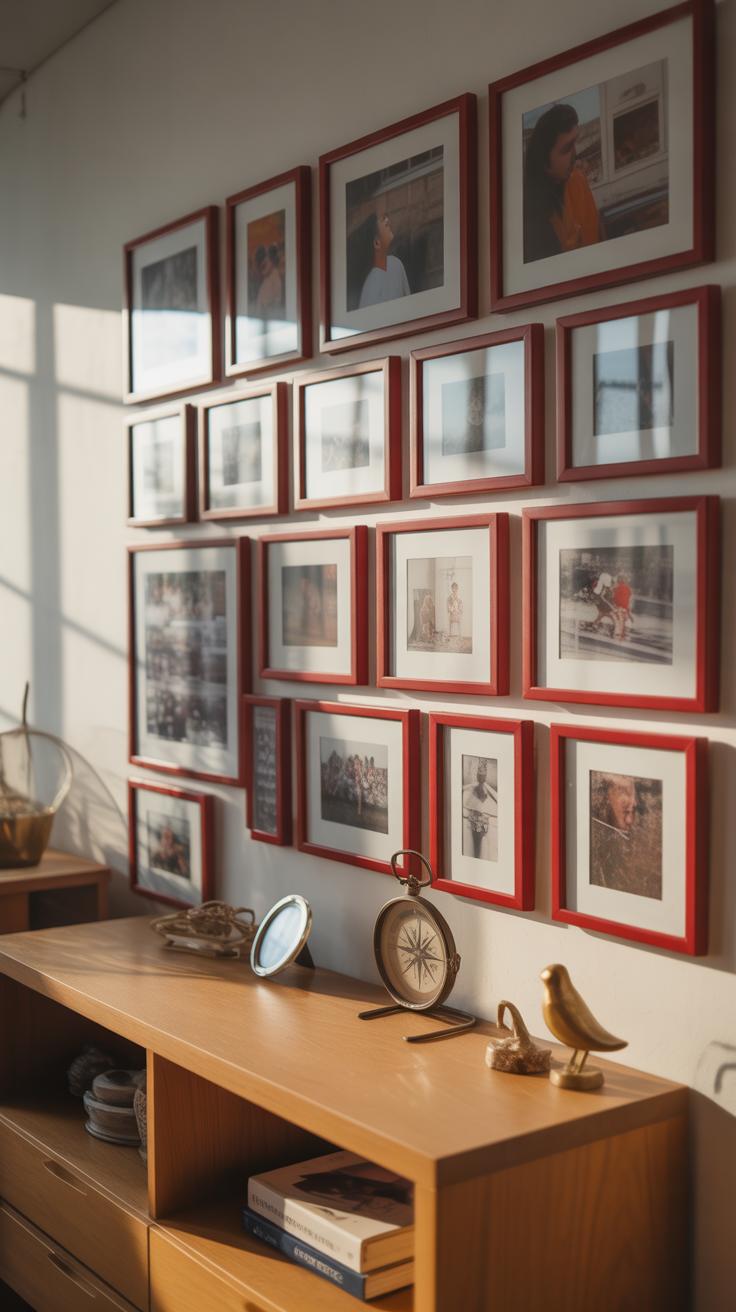Introduction
Red is a powerful color that can change the feeling of your room quickly. It can make your space feel warm, lively, and exciting. Decorating a room with red is not just about painting walls red; it’s about choosing the right shades and accents that make your room shine. You can create a red room on any budget by making thoughtful choices about color, furniture, and decorations.
This article shares practical ideas for red room decor. It will help you decide the shades of red to use, how to mix reds with other colors, and clever ways to decorate without spending much. Whether you want a bright spot in your home or a calm red space, these tips will guide you step by step.
Understanding Different Shades of Red
Red isn’t just one color—it spans a wide spectrum, each shade bringing its own personality into a room. There are warm reds, cool reds, and muted reds, each shifting the mood in subtle but noticeable ways. When you’re thinking about decorating with red, understanding these differences can make all the difference.
Warm Versus Cool Reds
Warm reds—think crimson, burgundy, and rust—carry a sense of coziness, almost like wrapping a room in a soft blanket. They can make a space feel intimate, great for rooms where you want a snug atmosphere, like living rooms or dens. On the flip side, cool reds such as cherry and ruby offer a fresher, brighter feeling. They often bring energy and a lively vibe, ideal for kitchens or dining rooms where you want things to feel more active than relaxed. I remember visiting a friend’s ruby red kitchen—there was something undeniably cheerful about it, though it might not suit a bedroom.
Muted Reds for Subtle Elegance
Muted reds step back from intensity and offer something calmer—tones like brick and terracotta fall here. These shades tend to bring a slightly more sophisticated, gentle touch. Rooms that aim for understated elegance gain a lot from such colors. For instance, a study or a cozy reading nook painted in brick or terracotta feels grounded without overwhelming your senses. It’s like the room quietly commands attention without shouting, which can be oddly comforting.
Mixing Red with Complementary Colors
Red can feel intense on its own—sometimes almost too much—so balancing it with other colors makes a big difference. The trick is to keep things from feeling overpowering, especially if you want your space to feel inviting rather than overwhelming.
Neutrals That Calm Red
White, beige, and gray act like a kind of cushion for red. They soften the overall look without stealing attention. For example:
- Paint your walls in a soft beige or light gray and add red cushions or throws for pops of energy.
- A white sofa with red accent pillows can feel fresh but not jarring.
- Gray rug paired with red artwork creates a grounded vibe.
These neutrals help your red accents stand out but keep the room feeling open and balanced. I have a friend who swears by pale gray walls when working with red—it makes the space feel calm, even with bold reds in the furniture.
Using Green for a Natural Look
Green and red are natural partners, yet it’s easy to get the balance wrong. Too much green with red can feel festive, which might not always be the mood you want. But if you add green thoughtfully—through plants or subtle decor—it adds freshness and life to a red room.
Try this:
- Use leafy plants like ferns or succulents to add pops of green; their organic shapes contrast nicely with the intensity of red walls or furniture.
- Decorate with small green ceramics or textiles—nothing too bright, something more muted.
- Maybe a deep olive green throw or a rug with hints of green can break red’s dominance gently.
It’s almost like green offers a breath of fresh air. If you’re unsure about green, start small. A couple of potted plants might be all you need to see how much lighter the space feels.
Affordable Ways to Add Red to Your Room
If you want to bring red into your space without spending much, focusing on textiles is a smart move. Red cushions, throws, and curtains can change the vibe quickly—and cheaply. Think about swapping out a few pillows on your sofa or adding a cozy red throw over a chair. It doesn’t take much, but those pops of color can feel refreshing almost immediately.
Red curtains are another easy switch. They frame windows and bring warmth, but you can find budget-friendly options if you look carefully. Sometimes, stores have clearance sales or you might find curtains that just need a little hemming to fit your space perfectly.
Red Textiles for Quick Changes
Textiles in red work well because they’re flexible—you’re not locked into a permanent change. A red throw draped over a neutral sofa draws the eye, but it’s easy to remove when you want something different. Pillows come in all shades and patterns; mixing solids with prints adds a bit of personality without feeling over the top.
Curtains, though sometimes seen as major purchases, are often surprisingly affordable, especially if you shop out of season or try online outlets. Plus, you don’t have to replace the whole set—sometimes one panel in red creates enough impact.
Finding Red Decor Secondhand
Thrift stores can be treasure troves of red items, from lampshades to vases and even small furniture pieces. Flea markets and garage sales also offer chances to find interesting red decor at low prices. It might take some patience and a bit of luck, but stumbling on a red side table or vintage chair can give your room real character.
One time, I found a red ceramic lamp that completely changed the bedside table look, and it cost less than twenty bucks. It wasn’t perfect—it had a few chips—but a little sanding and repainting made it look intentional.
Another fun idea is to repurpose secondhand finds. A simple wooden stool can become a bright red accent with some paint, or fabric scraps can turn into DIY cushions or wall hangings. It’s a chance to add red without the price tag that comes with new designer pieces.
Using Red Paint Effectively
Painting a red accent wall is a classic way to introduce this bold color without overwhelming a room. Instead of covering all four walls, focus on one that naturally draws attention—often the wall behind a sofa, bed, or fireplace. It adds depth and warmth without feeling like you’re swimming in red. Smaller touches, like painting doors, moldings, or even parts of your furniture, offer pops of red that break up neutral tones nicely.
When it comes to finishes, think carefully. A matte finish can feel cozy but may show marks more easily, while satin or eggshell catches light subtly, adding a gentle sheen that softens the intensity. Glossy finishes, on the other hand, stand out more but might not suit every style or room function.
You’ll want to balance red with complementary colors to avoid a clash. Soft greys, cream tones, or warm wood hues can make red feel grounded rather than flashy. Sometimes mixing red with cooler shades—think muted blues or subtle greens—works if the lighting supports it. It’s really about what mood you want, and trying different combos might surprise you.
Choosing the Right Accent Wall
Picking the wall to paint red can be trickier than it sounds. Usually, the wall you see first when entering the room makes a good candidate—it sets the tone immediately. If there’s a natural focal point, like an art piece or architectural feature, that wall often benefits from a splash of red.
Lighting plays a big role too. North-facing rooms get cooler, less direct sunlight, which can make red appear darker or even a bit dull. In that case, aim for a warmer or brighter red, and select a wall that catches the most light during the day. For smaller rooms, one red wall can prevent things from feeling cramped, but be careful not to pick a wall that closes the space off.
Sometimes, the simplest option is to avoid walls with many doors or windows. These interruptions can break up the red and reduce the visual impact you’re aiming for.
Painting Furniture for a Pop of Red
If you want red in your space but aren’t ready for a wall, furniture is a fun place to start. A red chair in the corner, a shelf dipped in red paint, or even a small table can bring just the right amount of color. I remember painting an old side table for less than ten dollars—it instantly became the room’s conversation starter.
Choosing which pieces to paint depends on your room’s layout and style. Look for furniture that’s already a bit plain or worn, and give it new life with red. The key is contrast; a red piece looks best against neutral walls or wood floors.
This approach also feels approachable—you can start small, test different shades, and repaint if you decide to change things up. Plus, painting furniture often creates a more DIY vibe that keeps costs down while still making a statement.
Red Decor in Different Room Types
Red in Social Spaces
Red works well in living rooms and dining rooms because it naturally draws people together. It creates warmth and energy—qualities that encourage conversation and connection. For instance, a red sofa or a set of red dining chairs can be a bold centerpiece. But you might want to balance that intensity with neutral walls or softer lighting to avoid overwhelming guests.
In dining areas, red can even stimulate appetite and excitement for meals, so it’s a popular choice there. Yet, too much red might make the space feel overly busy or rushed, which is something to watch out for if you enjoy slower, more relaxed dinners. Sometimes, subtle accents like red cushions or artwork work better than repainting full walls.
Red in Personal Spaces
Using red in bedrooms or studies demands a lighter touch. Bedrooms, for example, benefit from red’s warmth but need calm too. A deep red throw blanket or a few accessories can add coziness without disturbing sleep. The key is to avoid letting red dominate, so dark shades or bright reds might feel too stimulating or harsh at night.
In home offices or studies, red can boost focus and even energy, though it shouldn’t compete with your need for calm and clarity. Perhaps a red lamp or desk organizer can enhance the space without becoming a distraction. I’ve found that mixing red with softer colors helps maintain balance—you want the spark of red without the chaos.
Incorporating Red Patterns and Textures
Adding red through patterns can really change the mood of a room, but it’s tricky to get right without things feeling too busy or overwhelming. You might think red means bold walls or giant statement pieces, but sometimes a subtle approach works better. For instance, red striped curtains can add a line of color that feels structured without demanding all the attention. Or try floral cushions with small red blooms—they bring warmth and a touch of nature without clashing.
Patterns like geometric shapes can introduce a modern touch to red decor too. Yet, it’s easy to tip the scale from interesting to chaotic, so picking one pattern and repeating it thoughtfully is usually best. Less can be more here. Have you ever noticed how a simple red-and-white chevron rug can anchor a room without shouting?
When it comes to textures, red really shines with materials like velvet or silk. Velvet cushions or a silk throw add depth because they catch light differently, creating movement. They make red appear softer, even luxuriously inviting—which I think is why velvet sofas or chairs in deep red feel cozy yet lavish. On the other hand, shiny textures like silk lend red a brightness that avoids dullness. They almost seem to glow, especially in natural light.
Mixing textures can also work well. For example:
- Pair a smooth silk curtain with plush velvet cushions
- Use a matte red rug alongside glossy silk lampshades
- Combine different fabric weights to give the eye something to rest on
These choices bring layers to the space, so red never feels flat or one-dimensional. It’s a bit like tuning the room’s vibe—you can go softer or richer just by switching how the red presents itself. Would you rather have a room that whispers with a gentle red velvet throw or one that sparkles with bright silk patterns? Both options invite you in, but in very different ways.
Red Lighting and Accessories
Lighting plays a surprisingly powerful role in rooms that feature red as a main color. It’s not just about brightening the space; it shapes how the reds actually feel. For instance, warm light bulbs with softer glows tend to soften red walls or furniture, creating a cozy, inviting environment. Think of using lamps with amber or soft white bulbs instead of harsh, cool-toned lights that might make the reds look too sharp or even aggressive.
When I first tried adding red lampshades or candleholders into my own space, it changed the whole vibe—made it feel less like a fire alarm and more like a comfortable den. Candles, in particular, can add a flickering warmth that highlights red tones beautifully. They don’t have to be bright red themselves; a simple white or cream candle in a red holder often works better to keep things balanced.
Small accessories serve as anchors that tie a red-themed room together without overwhelming it. Consider framing your walls with red picture frames—these can draw the eye in a subtle way. Vases in varying red shades add dimension and act as focal points on shelves or tables. And don’t overlook rugs; a red rug, especially with some pattern, can really ground the space and pull colors from the rest of the room into one spot.
Maybe you’ll hesitate on lamps or frames because they feel like a big commitment. But the good news? These items are usually easy to swap out if the mood changes—unlike paint, that’s for sure. Could be worth trying a few red accessories and seeing how they shift your space’s energy. What if just one or two well-chosen items made your red room feel more alive, without overpowering you?
Maintaining Your Red Room Over Time
Caring for Red Paint and Surfaces
Red paint can be striking, but it’s not immune to fading or scuffs. Keeping walls and furniture looking sharp means regular gentle cleaning. Try wiping down surfaces with a soft cloth dampened by a mild soap solution—avoid harsh chemicals that strip color or damage finish. I once lightly buffed a painted red dresser with a microfiber cloth over months, and it surprisingly kept its shine without wear spots.
Touch-ups are almost inevitable. Keep some extra paint for quick repairs. Small chips or scratches can appear suddenly, especially in rooms with high traffic. Matching the exact shade can be tricky—test a hidden area first and remember lighting shifts how red looks on walls.
Refreshing Red Fabric and Items
Red textiles often fade faster or show dirt easily. Regular vacuuming helps, but fabric care varies. Check labels for washing instructions, especially for pillows, curtains, or rugs. Some items benefit from spot cleaning with mild detergent, while others need professional cleaning to avoid color loss.
Consider swapping out heavier or darker red fabrics seasonally. Bright reds can feel overwhelming in summer or too warm in winter. Changing cushions or throws can refresh a space without much cost or effort. Sometimes replacing small accessories—not just cleaning—keeps the vibe alive. I’ve noticed that even a faded red cushion can drag down a whole room’s feel, so replacing it felt like a quick refresh.
Keeping your red elements fresh isn’t always straightforward. Some day you’ll be scrubbing walls; other days, simply tweaking textiles is enough. What’s your experience with maintaining bold colors? Does red demand more patience or just a different kind of care?
Personalizing Your Red Room
When it comes to making a red room truly yours, adding personal touches can change the whole feel. Think about the things you love or moments you want to capture. It doesn’t have to be complicated or expensive.
Adding Personal Art and Photos
Artwork or photos with red shades can tie the room’s bold color to your own story. Maybe you have a favorite picture from a sunset or a snapshot of a red flower that means something to you. Even prints or paintings with just a splash of red can bring life and meaning to the walls.
You might want to rotate these pieces often—depending on your mood or the season. It makes the space feel alive and deeply connected to you, rather than just a generic color scheme.
DIY Red Projects for Unique Decor
Simple DIY projects add character and let you control the details. Painting old planters in different shades of red can add depth and a natural touch. Or try making a red-themed wall hanging—something woven or with fabric scraps—that adds texture and uniqueness.
Even small projects like customizing lampshades or crafting your own coasters in red tones can bring a sense of accomplishment and warmth. These personal creations often become conversation starters, and you can adjust them as your tastes evolve.
What red piece tells your story best? Sometimes, the little efforts hold the most meaning in shaping your space.
Conclusions
Using red in your room decor opens many possibilities. You can create a bold or soft space just by changing shades and accents. Remember to balance red with other colors to keep the look nice and not too strong. With clear planning, you can enjoy a red room without overspending.
Think about your personality and the mood you want when choosing red decor. Small changes like red cushions or curtains can add a lot of life. Start with one idea, keep it simple, and enjoy your new red space. Your room can feel fresh, stylish, and inviting with these easy red decor ideas.

